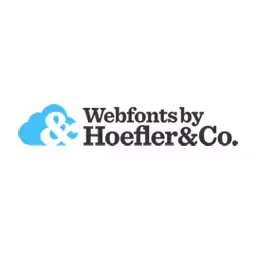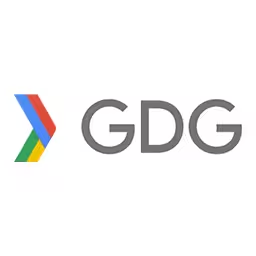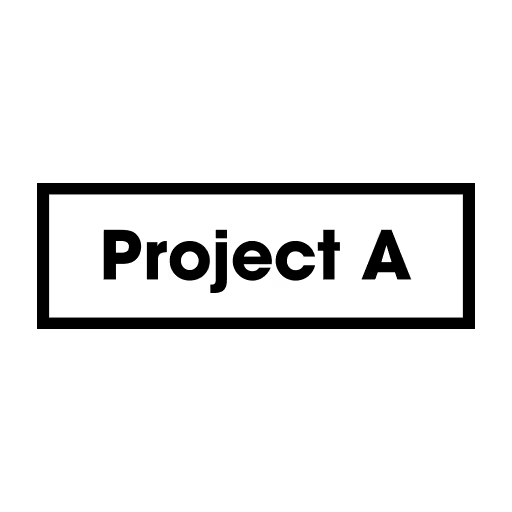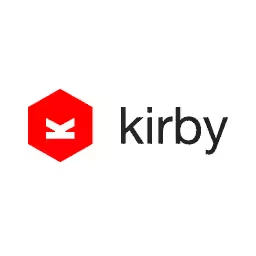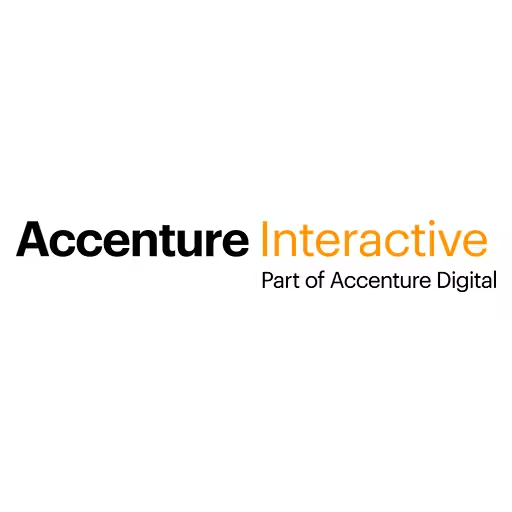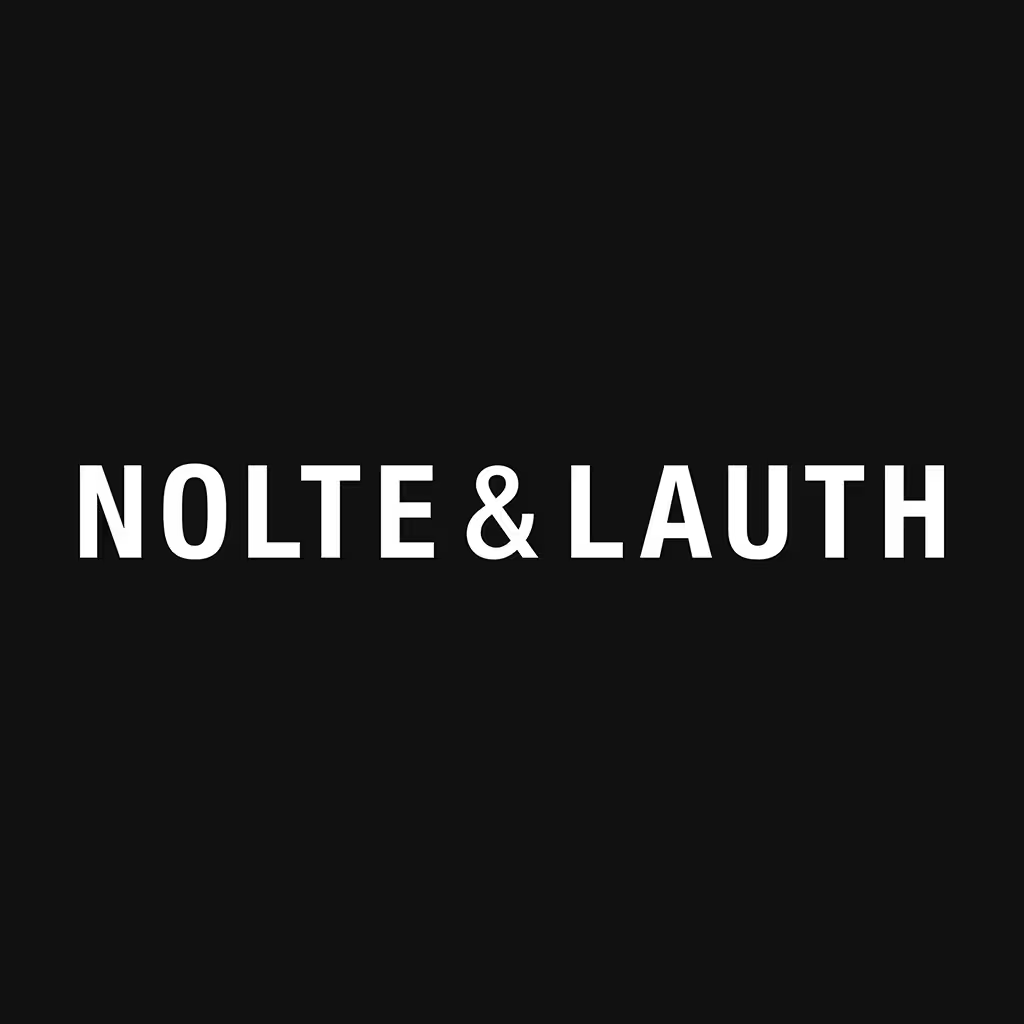Paula Scher

Paula Scher is one of the most acclaimed graphic designers in the world. She has been a principal in the New York office of the distinguished international design consultancy Pentagram since 1991, where she has designed identity and branding systems, environmental graphics, packaging and publications for a wide range of clients that includes, among others, Citibank, Microsoft, Bloomberg, the Museum of Modern Art, Tiffany & Co, the High Line, the Public Theater, the Metropolitan Opera, the Sundance Institute and the Philadelphia Museum of Art.
During the course of her career Scher has been the recipient of hundreds of industry honours and awards; she is a recipient of the National Design Award for Communication Design, the AIGA medal and the Chrysler Award for Innovation in Design, among others. Scher has served on the Public Design Commission of the City of New York from 2006-2015. She is an established artist exhibiting worldwide, and her designs are in the permanent collection of the Museum of Modern Art, the Cooper Hewitt National Design Museum, the Library of Congress, the Victoria and Albert Museum and other institutions. She is the author of “Make It Bigger” (Princeton Architectural Press, 2002) and “MAPS” (Princeton Architectural Press, 2011). Scher holds a BFA from the Tyler School of Art and a Doctor of Fine Arts Honoris Causa from the Corcoran College of Art and Design, the Maryland Institute College of Art and Moore College of Art and Design.
Talk: Life Lessons from the Field
Paula has a lot of experience and many stories to tell. When she agreed to come and speak I was super happy and delighted as she always was one of my greatest design heroes. I hope you are going to like what she brings to Berlin for you, which is:
Life Lessons from the Field: 10 things I know about designing that NEVER change.
Transcription
[Music]
Paula Scher: I’ve actually been a practicing designer for about 45 years, and so I’ve spoken in a lot of places and done a lot of conferences, et cetera. I find that you are pretty much, within ten years, always the same age; and that I keep getting older, and the audiences keep getting younger. That’s fine because you’re looking at me from a distance, and that makes me very happy.
Audience: [Laughter]
Paula: But I found, over the period of time of working and through the breadth of technology that exists on our planet, that there are things that are always true and that have been true for 45 years. They have nothing to do with technology, and they have everything to do with making things and people. I thought I’d give you my ten life lessons from the field. These are things that, if you haven’t already thought about them or done them, you may go back and think about them, and that they are things that stay with you your whole life. Your own version of them; not my version of them, but your own.
Starting from number one: Fall in love with something that was designed. Know what it was. Remember it. Remember the first time you saw it. Remember how you felt when you saw it. Remember why you felt that way. They’ll all be different, but you’ll return to that always because, when you’re thinking about why you’re doing something, that will come back and haunt you.
For me, it was three things. It was these three Beatles covers. The Revolver cover, I saw when I was in high school, and I thought it was the most involving and fantastic thing before I’d even begun to take drugs.
Audience: [Laughter]
Paula: You know I am of that age.
Audience: [Laughter]
Paula: It stayed with me forever. The artist was Klaus Voormann. This is an album designed by Peter Blake and Jann Haworth. I saw this my first year of college, and I stared at it for about two hours while I was listening to this incredible record over and over again.
I remember finding things in it and having my own sense of contemporary culture reaffirmed by what I found in it. It was as if the album talked to me. All the jokes of the people. Oh, good, there’s Dylan in the back, and there’s Marilyn Monroe, and they’re all in there together. It was amazing. Peter Blake, who I later came to know as one of the primary authors of this.
Then finally, this audacious, only a year later, after making the most involving record cover, this arrogant, audacious album cover of nothing that only the Beatles could do, and that was pure chutzpah.
For me, this stuff stayed with me because, in everything I do, is it going to be involving? Is it going to reflect the culture of its time? Is it going to be outrageous? Those things have made me want to keep making things.
Incidentally, what was really funny to me, and I only realized it later, is the three artists I talked about were actually fine artists. None of them functioned as graphic designers. I never knew that until very recently. That’s who the Beatles got to do their covers. Rather-rather amazing.
Lesson number two is about heroes and mentors, people that said stuff to you that stayed with you, and that you draw from. You draw from those people at very specific moments when you feel like you’ve lost it. I had two important ones.
One of them was my teacher in college, my illustration and design teacher named Stanislaw Zagorski. He was a Polish illustrator. He spoke very bad English. He would say things like, “Probably you should do over for me better.” I would feel terrible, and I had to please Mr. Zagorski because his English was so bad.
He had been a record cover designer, and he did the Cream Wheels of Fire cover when I was a junior in college, and that was just the coolest damn thing on the planet. He persuaded me to move to New York. He told me that graphic design was a field that really anybody could go into if they really wanted to it. It’s absolutely true. It’s not like being a movie star. If you want to do this thing, you can. I moved to New York because of him, but the most important thing he did for me when I was frustrated with lining up Helvetica on a grid--
Audience: [Laughter]
Paula: --is, he said, “Illustrate with type.” In those three words, he gave me the rest of my career, and I think about it every day.
My second hero and mentor is my husband, Seymour Chwast, who was the founder of a studio in the ‘60s called Pushpin. He was partners with a designer named Milton Glaser, and they made work that looked like this. I met him when I was 21 with my portfolio. I married him, I divorced him, and I remarried him.
Audience: [Laughter]
Paula: We’ve been in every possible relationship. None of them work.
Audience: [Laughter]
Paula: But we’ve stayed together all these years because we’re united by our passion for making things, and he’s a man who makes things all the time. His work is biding, funny, political. He does it because that’s what he does. Seeing that has been continually inspiring, and I don’t know if I would have worked the way I did all these years without being in that relationship.
Lesson number three: This is really important early on and later, which is, push back against something. Find things contemporary that you hate and overthrow it. Be a rebel. Question it. Don’t follow the norm just because people are doing it. For me, when I entered the design field, the thing I hated more than anything was the typeface Helvetica.
Audience: [Laughter]
Paula: I hated it because I thought anybody could use it. I hated it because I thought it felt like cleaning up my room. But mostly, I hated it because, in the ‘60s, it was the language of corporate design, and I blamed corporations in America and American power for the Vietnam War, which I was protesting. Voting, using Helvetica is like endorsing the Vietnam War. I just conflated those things, and that’s the way it was.
Audience: [Laughter]
Paula: Actually, it’s a completely beautiful typeface. I can’t -- you know, I feel like a fool standing here and saying that. But, because of it, I began drawing typography and looking for dated typefaces and things that were discarded. This is long before the computer and before typography was drawn and so readily available. You made these things by hand.
These were all record covers I did in the ‘70s where I found things. This was a Buckingham pipe tobacco can where I copied the topography for what’s now a classic jazz album, Saturday Night in San Francisco. Or I used the influence of sort of Asian woodcuts, and the back cover was actually very radical for its time because most covers had images on them, and the whole thing became typographic, a series of labels.
Or I had people build things from things I drew; like this was an inlaid record cover. The piece of wood, I think, was probably about three feet wide and was carved and inlaid by a man named Nick Fasciano who built things. Of course, there was no Photoshop in those days, so the kind of craft that you had to just absolutely do something was astounding. Now, of course, this is unexceptional because you figure you could do it in Photoshop.
This was another piece of inlaid stained glass that was also built by Nick Fasciano from a tissue I drew, and Leonard Bernstein purchased it and owned it. Now it’s the family estate, which I love. I love that these things live on.
I worked with a lot of period typography, or not period typography, but I grafted these things, and they stayed with me. Really, what happened, and remember I’m a designer in my 20s at the point I’m doing this, is that it gave me vocabulary I could use for the rest of my career. I really knew how to work with type just for not liking Helvetica.
Now, this is very important, and this is really about growth. You have to defy the career staircase. I’m going to give you the basic sort of structure of it, and you can determine if it’s going to apply to you or not. The trick is not to fall prey to it.
When you start out in your 20s, you don’t know very much because you’re right out of school, and you’re learning stuff. If you think of a career like a staircase, at the beginning the steps are very shallow and the risers are very steep. That’s because you make big leaps because, when you don’t know anything, you make a lot of mistakes. You learn from your mistakes, and you move on and become professional. That’s how that happens.
You’re kind of either a peon or a wunderkind, depending upon the sort of position you have. You may think it might be terrific to be a wunderkind, but wunderkinds burn out. You’re better off as a peon. Trust me.
In your 30s, you are already becoming a pro, so you’ll find that the steps get wider and the risers get a little more shallow because you’re on a level. You’ve hit a level, and you’re starting to move along until you find the next thing that brings up you to some significant growth.
By your 40s, you’re an ageing pro. It happens very fast in this profession. Very scary because you find that you can be replaced by somebody who is in their early 30s very easily. Software developments, they learn it younger. All that stuff is scary. You’ll find that the step got very wide and the riser got very shallow.
Then you pop into your 50s, and the only difference is you’ve got power. The reason you have power in your 50s has nothing to do with what you’ve learned. It actually has to do with the fact that all your clients are in their 50s because your clients are pretty much the same age as you are, as you grow up. They’re in positions of power. Therefore, you’re in positions of power, and it’s a great place to be. Your 50s are great. Growth, not so great. You just try not to make mistakes.
Sort of by your 60s, you’re sort of screwed.
Audience: [Laughter]
Paula: Things are getting a little rough. If you’re lucky, you pass for 55 for about the next 10 years and nobody really knows. Then things go a little haywire. You really don’t know what’s going to happen. I mean it’s sort of like--
Audience: [Laughter]
Audience: [Louder laughter]
Paula: I’ll just lay it out for you straight.
Audience: [Applause]
Paula: I mean I hate to be brutal about this thing, but I’ve looked at it for a long time, and it’s pretty much true.
Audience: [Laughter]
Paula: Defy it. Now, this may be contrary to pushing back against something, and it may be contrary to defying the career staircase, but you may find that you’ve begun to work with someone or something or in some area where you keep growing it and evolving it, and the situation is good. You think, “Oh, gee. I’ve been doing this for a long time. I probably should move on,” but, in fact, you’re still discovering things, and you have really powerful relationships. All of a sudden, you find you’re doing this thing very easy.
Go the distance. Stay with it. I stayed with something, a client for now 24 years, and I got very good at something as a result of it. I really began to know an industry. I became an expert in something even though I maintained lots of different types of client relationships. Mine was with The Public Theater.
The Public Theater, for those of you who don’t know, is a New York City not-for-profit theater that their mission is to put on plays that are for the public that are of interest that can be commercial enough to go to Broadway. They are the home of Hamilton, if you’ve heard of that play. They were founded at The Public Theater. Another was Bring in the Noise, Bring in the Funk; or Hair. These are things you may know about. They were hatched at this small theater in New York.
I was hired to create an identity and a visual language for the theater in 1994. I began creating this thing with American Wood Type before it was programmed and began creating a series of posters that have, over the years, received a lot of acclaims and are fairly visible. However, not many of these were actually printed, and it’s a fairly small theater, so that the graphic success was actually broader than the public’s recognition of it because, if you didn’t go to The Public Theater, you never saw these things.
While I began doing them for these individual plays, the one that everybody recognized was for this monster show that happened in the ‘90s called Bring in the Noise, Bring in the Funk. What happened here was upsetting because the thing became a style, and other people began working with it. When that happened, I had to change it to make sure that The Public Theater would have its own voice and it wouldn’t look like other plays.
The problem with changing it, which I did in the past three I showed you, was that The Public Theater lost its identity. A new director was hired, and he asked me if I would go back and readdress it. I readdressed the identity, so it had a very formal identity that looked like this, and it got very boring very fast. Now, I’m talking to you about over a 10- or 12-year period.
Then after about, I’d say, 16 years, we redesigned the lobby of the theater, and the lobby of the theater had this fancy, digital Shakespeare machine that does 39 plays on blades. It had typography inlaid into the arches that stayed there forever, and donors’ walls that popped out of the brick.
In the front of the box office was a montage of all the posters I’d made, and I realized at that point in time that that’s where they belonged because all the posters were digitized. We only put them out in boxes once, and everything had gotten to be digital. I was building a digital, in-house department for them. And that the work I had done really had to be rethought.
I began to realize that if you made everything the same, it was boring after the first year. If you changed it individually for each play, the theater lost recognizability. The thing to do, which I totally got for the first time after working there at this point for 17 years, is what they needed to have were seasons. In other words, that you looked at everything they did. They have the cabaret called Joe’s Pub. They put on about 12 plays a year. They have a children’s program. They have a writer’s program. All these things need to be designed.
You could take the typography and the color system for the summer festival, the Shakespeare in the Park Festival, and you could begin to translate it into posters by flopping the colors, but using some of the same motifs, and you could create entire seasons out of the graphics. That would become its own standards manual where I have about six different people making these all year. That was what we did the first year. That was what we did the first year.
The second year, we did this skewed typography. It moved one way. It moved the other way. Then, collectively, it became the season. Each year the public theater gets a whole new identity.
I think the fourth year we started slicing through the typography. This stuff worked very well. It’s just kind of very powerful, very brash. It held up.
The past season, last year, we did this thing. If you saw Netflix, this is what we were working on, the War Love poster that ended up becoming a really terrific season and very recognizable. Then this past year we did a Julius Caesar play that had five posters all together and then became also a season all by itself.
What’s great for this is I still work with it, and it’s become my lab. It’s where I go to become new again. It’s where I go to see if I can try something I haven’t tried before. And that I can only do it because I’d built this relationship of trust with this place over 23 years. Stay with it; it’s a good thing.
Being a neophyte means actually going back to being in your 20s again and not knowing what you’re doing. That’s the way you learn stuff. You learn stuff by making mistakes. If you know something, you already know how to do it. You’re already an expert.
The way I actually began to broaden my career was in the late ‘90s and the year 2000. What had happened was that computers were prevalent, websites were everywhere, everyone was becoming a digital designer, and I was in my early 50s. It felt very late for me to be very good at this thing, and I didn’t feel comfortable with it, but I wanted to find another way to work.
Now, my life with technology has been really sort of a strange one where, just as the point where I’m supposed to be out of it, a new technology comes along and chases all the predictions. For example, I was told in 1994 that I was going to go out of business because I couldn’t get my head around CD-ROMs.
Audience: [Laughter]
Paula: I’ve heard this every year for the next, you know, 15 or 20 years. I found that these things change. That’s not what I’m about. I’m about making things that are recognizable, not about making things that function necessarily digitally, though the things that I make are always used digitally and they’re very different professions because I’m actually an image maker, not a user designer. That’s not what I do.
I wanted to find something that would relate to what I do, but wasn’t necessarily graphic design or the expectation was it wouldn’t be an image that would be printed or even reproduced digitally. Because of The Public Theater, I got asked to work on a school for actors and actresses. It was in a building in Newark that looked like this. It was a rectory building. It had been given to the New Jersey Performing Art Center by Lucent Technologies. They wanted me to do something with it, maybe cover it with banners.
Their budget was low, and I made the discovery of my life, which was that if you take a building and you make a Photoshop rendering of it, and they have the budget to make it look like the Photoshop rendering, it will come out in the end exactly like the Photoshop rendering. Here was my Photoshop rendering of this building that I covered with typography, and here is the building.
Audience: [Murmurs]
Paula: In fact, more of my environmental design gets made looking exactly like what I’ve presented to the client than anything else. If it doesn’t look like it, it’s because it doesn’t get built at all. There’s no middle ground. It’s not like they ask you to make something a little smaller. They just don’t because, once they’ve agreed to the budget and the way the things are built, that’s the deal.
For this building, I didn’t know who was going to paint it. I hired guys who paint garages in Newark, New Jersey, and this was the best job they ever had. They got up on a ladder. They’d call me on the phone and say, “Hey, Paula, you know your type here, you know, we didn’t like the spacing. We thought we’d close it up a little,” and they were right. They did a really good job of it.
I began doing this thing inside a lot of charter schools. I became sort of the educational queen, and I still do this work of messaging and persuading public and private schools to not paint their buildings beige.
Audience: [Laughter]
Paula: It’s been quite successful. I work with union workers who usually don’t care about their jobs that much. I had two terrific painters who worked on this music room that you’re looking at. I remember one of them; when he saw the comp, he said, “Oh, lady, you’re crazy,” and then he did it, and it was just gorgeous. They do glorious work. It’s funny. If you challenge people, they really have fun with it.
I began designing exterior signage for theaters and interiors of theater spaces, but then it moved on to corporate work, and I began doing insides of corporate headquarters. This is a massive digital sign that my partner, Lisa Strausfeld programmed. It was based on Bloomberg’s identity, which is really the world in numbers.
Everything that was communicated on this digital signage, which is essentially an AP news feed, was parsed so that all the important numbers were blown up big and jumped across the spaces. We designed this thing this way because we had originally designed it as one giant jumbotron that this thing would project on, which was actually a little boring, but that’s the way we had designed it. Then we were told to lose 40% of the budget, so we cut these spaces in it.
Audience: [Laughter]
Paula: It was so good for the piece - so good. Nothing like a budget cut.
These are the stairs in Bloomberg’s headquarters. They were all different heights, so the numbers were just determined based on the one height, the tallest ceiling. It was actually the lowest ceiling. Then if the ceiling was too short, it just bent around, which is the way we do stuff.
I built things out of all kinds of materials. I still do. It’s really a kick because I realize that environmental graphics is just graphic design with a different PMS swatch book. It’s a lot of fun to figure out space, how people are going to read things in a space, and I still feel like a neophyte doing this.
Here’s some crazy stuff. This is for Brickell City Centre in Florida, if they ever come out of their flood down there. This is a sign that’s going to be about 125 feet high and rotate.
You’re looking at a virtual reality little sketch we made of Planned Parenthood’s headquarters where we made a hallway mural, that runs up about five flights of steps, out of their advertising from all periods of time that we re-colored and turned into pop art, essentially. These are the pieces flat, and they’re really birth control devices, you know, so it’s sort of fine art of birth control pills, diaphragm cream, and all kinds of exciting things like that. Here’s a syringe. That’s nice.
Audience: [Laughter]
Paula: The pills. What was wonderful is that, all over the United States, after this thing was installed, the various Planned Parenthood headquarters began calling them for big hunks of the mural that they could put in various office spaces. It was the first time I had done one of these things that became exportable. It’s quite wonderful when you design something for a given space and it moves around just like an identity. They’re really the same thing. It’s like how do you encapsulate the spirit of a place, an individual, or a group in a form of graphic design?
[Pause]
Paula: I seem to be missing something here. Oh, dear. Okay. I’m going to have to talk about this without an image that seems to be missing.
In 2013, New York City had this really bad hurricane called Hurricane Sandy. It demolished the boardwalks. I was hired.
I’m a little worried about this because I see some images, but is it the next one there? They’re there. Okay.
I was hired to create a new sign system for the demolished area and got this idea to do what I called sort of emotional way-finding signs where I took all the entrances to all the beaches in New York City. I know you don’t think there are beaches in New York City, but there are. They run along Brooklyn and Queens, and they have specific street entrances. You walk through the street, and you go onto the beach.
I did this because the communities were really devastated, and they were almost against any kind of renovation except having their wooden boardwalks built back, which was an impossibility. We did these signs, and then painted these bright colored buildings along what was left of a little cement version of the boardwalk and then began working on the boardwalk itself.
We created a font for the boardwalk, which we called Rockaway Wide for Rockaway Beach. It was made out of the pixels from the letter A that you see here. What you’re looking at are the boardwalk planks on the top and the way the letterforms are made out of the planks.
Here it is on the boardwalk. The whole thing runs about a mile wide. You’re looking at some drone shots. It just opened last summer for the first time. It was two years in the making.
The town loves it. I really am so ecstatic about it because it’s very hard when you work with community boards and people to get their involvement and buy-in because everybody is more angry, usually, than they’re ready to come together. But when they saw their neighborhoods reflected in these beach shots, I sort of won them over, and the boardwalk became easy. You see this. If you fly into Kennedy Airport in the morning or evening, you’ll see it because airplanes fly right over that area.
This is a cinema that we just completed only a couple of months ago. It’s an art house on 13th Street in Greenwich Village. It’s made out of the logo for the QUAD, which are Q-U-A-D, four letters. It was designed as a series of air conditioning ducts that go into the theater and out of the theater. Then, of course, everything is in cubes. There’s an animated, giant, jumbo wall built out of cubes. You might be able to see some -- let me just see if I can get this to animate.
These things are programmed. We wrote a program for films, of black and white films, of old movies. They have different grid breaks that sort of suit the cinematography. I think we made 12 of these in all, and they can use them for a month and get rid of them. They ended up mixing them up in the period of a month, so I think we’re going to have to make 12 more soon. They run them; each sequence runs about 20 minutes. It was a lot of fun to do.
Charles Cohen, who owns the cinema, is an avid movie freak and collects and produces movies. He makes a lot of foreign films and documentaries. This is the entryway to the cinema, and you have the Q, the U, the A, and the D theater.
Lesson number seven: Find a personal expression. That means, find something you do other than what you do all day that you like to do just because you like to do it. Do it if it helps you. If it’s cooking, that’s great. Gardening, swell, or maybe it’s making something else.
I started doing this really insane thing where I began painting these really big, at-scale maps that are covered with information. I’ve been doing this now for about 15 years. By pure accident, I got a gallery, and the gallery exhibits them, so I have regular shows. That’s not so great because the regular shows means that I have to do them, and that sort of changes the game.
I make discoveries with them, nonetheless. I learn a lot. I learn a lot about places. There are things that I add to it. This is from my most recent show, which was all about the United States. I found that it’s the opposite of graphic design so that when I’m doing one thing that takes about five seconds because I’m working on four things at once. I’m telling different people what to do, and we’re moving things. Then I’m running into a meeting and out of a meeting, and then I’m going into another room and doing something else. The idea of being in a room with a little teeny brush on a great big canvas and painting something this monotonous is actually terrific for my work because they’re opposites, and they balance what I do at day and in private life. I love doing it.
Sometimes they become real projects, like the city of New York commissioned me to create a mural for a public school in Queens that was about 2,500 square feet. I did this mural by doing it small and hiring a sign painter to repaint it. It’s very interesting for me to look at his handwriting on this mural. But the mural covered the whole area, and there was a skylight that it went around.
When I was up for the mural with the city, which was a commission, I was against two other real painters. I won the project largely because I was an environmental graphic designer, and I proposed covering the whole space, where everybody else was just making a mural in space. That’s how I won the job. I took one of my paintings and scanned it into a virtual reality program and showed them how it would move.
Here’s me holding up the actual painting against the thing that was repainted, so you can see the scale of it. It was a lot of fun. I’ve done this a couple times more, and I want to keep doing them.
This is one I did in Philadelphia. Instead of having a sign painter do it, I had the students do it. I essentially painted this roadmap, painted the rug in, and then had 152 students paint on individual pieces of paper. They were given a section of Philadelphia that they found on Google Maps and used the information to create their own backgrounds and paint this thing in. It was sort of magical when you saw the space.
This is my most controversial piece of advice, which is, working for free is not giving something away. Working for free is getting something because you’re the one who should be determining that you’re doing it. It isn’t that somebody comes to you and forces you to do a free project. You determine when you do the free project, and there has to be some get at the end of it.
For example, I used to do all this goofy stuff for things like AIGA functions--that’s an American graphic arts organization--because it would get produced and people would see it. That’s how I started painting maps.
I made a series of silkscreen posters for a printer because he wanted to sell them, and I wanted to make them. I wanted to make them because I was changing the way I was working, and we sold them. We made money on them, and it really helped me grow as a designer.
I contribute political comment to the New York Times and send it to them. I think they pay me $500, but I don’t care. I just do it because I want to do it. That’s essentially working for free.
Sometimes I do political commentary for magazines. I still make posters for political causes. These are all things I do for free.
One thing I did for free went on for the next 15 years, but the paid me. I gave the HiLine a free logo because two guys came around, and they were going to do this project in New York City. It sounded cool, and it wasn’t very much work. When they started raising money, they actually began to pay me. I did all their signage.
Then, as a result of it, I did the parks department signage. That was a lot of work for free, and I did that because I lived there and because they needed it.
These were decisions I made, not something somebody forced on me. I’m glad I did all of them. I think that what’s great about the control in this is that you can change what you do as a result of making something else, but you can’t expect to be a neophyte and not qualified and have somebody necessarily pay you for doing that. The risks you take to grow are rewarded in what you get as a result of that work.
This is easy.
Audience: [Laughter]
Paula: This is the art department from CBS Records. They were great. I learned a lot there. Every single person I work with inspired me.
These are my partners at Pentagram in New York; London; Austin, Texas; and San Francisco. They’re the smartest people I know. They inspire me every single day, and they help me work. They’re the best.
Okay, the last piece of information is--
Something is falling there.
Audience: [Laughter]
Paula: This is the hardest thing to do is that it’s hard to change with the times because you think you already know something and you’ve got to break some habits. I know that I’ve been working a long time, and I could not have possibly been working without changing, without adapting to stuff. It’s not that I change the basic core of who I am, but I did change the way I worked.
In the ‘70s, I was essentially a conceptual art director, and I art directed record covers. Some of them are typographic, but a lot of them are photographic. This is a whole series for Bob James’ albums. They’re still around. I did these things when I was 25, 26, 27. You go and you buy them; they’re still there.
I brought a lot of illustration. This is a classic Muddy Waters album. Here’s Johnny and Edgar Winter together, shot by Richard Avedon, designed in 1976. A Bruce Springsteen album from 1978.
There are a lot of things I still really love. I still love this illustration David Wilcox did for a jazz album, and I absolutely hate this.
Audience: [Laughter]
Paula: It lives on. It lives on.
In the ‘80s, I think I was a postmodernist because all that work I did pushing back against Helvetica made me be known for sort of retro typefaces and working with historical styles. It gave me a very strong reputation as a certain kind of designer, which was good and bad. But it also enabled me to start my own business in the ‘80s, which was called Koppel & Scher. This is one of the pieces we did to launch the studio. As a result of it, I got more work that was like it. Manhattan Records was done as a tribute to Broadway Boogie Woogie, and it’s still in existence to this day. Then the Swatch watch poster, which was a tribute to Herbert Matter, and is probably the most controversial thing I ever designed and still being questioned to this day.
In the ‘90s, I was a typographic expressionist. I did things that were crafted and made up of letterforms, broken, some of them sort of violent and aggressive, and lots and lots of experimental and moving oriented typography that became fairly well-known in that period. A lot of this is still around, still seen, things that were drawn, things that were cut up like that.
Then by the 2000 period, I became a minimalist. That series of black and white posters I showed you before, that were the numbers, were not terribly different from the way I began working in that particular decade. Some of that was because of 9/11 and just sort of the kind of exuberance that existed in the ‘90s felt not suitable for the period after when everything suddenly got very serious, and my work got very grownup.
I did all these institutional identities at Lincoln Center that were all originally designed in black and white and very spare, and even identities for products. This is a company that makes DVDs of classic films. This is Bausch & Lomb, a pharmaceutical company in the United States; and the HiLine, which I showed you; all logos from that period.
Now, in 2010, I would call myself, in this decade, fairly much a visual language designer, which is creating components that collectively you recognize something. It’ll be more than simply one form to recognize something, but it’ll be extendable into all kinds of things like books, websites, or what have you. All of my work is really based on this now. It’s everything I do. It permeates everything. It probably started before 2010, but that’s when I started to recognize that I was doing it.
This is for the Type Directors Club, and I had built this system by getting 12 people to design TDC’s until they weren’t recognizable as the same thing. When we figured out how far you could go, which was pretty far, we could write a little guidebook about it.
Here is the basis for Microsoft that came out of Windows 8, which was essentially nothing more than a perspective chart, which, after we did Windows 8, we just gave it to the in-house department, and they rolled everything out, sometimes getting outside consultants, sometimes doing it themselves, and it still holds. I did this in 2012.
This was a redesign of Jazz, which I had originally done in the early 2000s and redesigned again in 2014. Often, I go back and redo identities. This had everything to do with being able to make these movable alphabets that were recognizable on the street in every form of promotion.
This is the Philadelphia Museum of Art. We made about 500 A’s of every piece of art in their collection that we could get our hands on, that we could figure out how it was a triangle. The same thing. Another little language for a woman’s social cause. This--
What’s going on here? There we go.
This is a program that fights for -- it stops taxing periods. Actually, 17 states have signed on since this whole thing was launched. It’s a lawyer and a PR person who came together to try to change America’s laws about taxing tampons, and it’s quite amazing. They’re succeeding because it’s not fair.
This is a typeface built out of three weights of font designed by Peter Bil’ak, which became Parson’s identity. The identity was designed to be flexible, to be usable, to be built by the in-house art department continually. We still consult for them, and this thing keeps growing, mostly done by the student body or the in-house art department. It’s fantastic. I love watching it grow. It’s really fun.
One more thing, just as I’ve gotten through this whole thing, because I’m looking at the next decade and trying to figure out what that thing is. A man I know named Tony Brook has a publishing company called Unit Editions. He publishes books that he sells online, and he does very beautiful monographs. They are quite expensive. He approached me and asked me if he could do a book on my work, which was an odd thing because I’m not dead yet.
Audience: [Laughter]
Paula: [Laughter] I kind of didn’t know how to respond to it. Then I thought, well, why wouldn’t I do that? He’s going to do a much better book on me than I would do on myself because he’s a better designer than I am.
I gave him my work. It’s in this book that’s 560 pages and has interviews, a history, and a lot of things you’ve seen and a lot more. What has been interesting for me at the point that it’s come out is that I saw the book. It’s thick. I looked at the work. It’s mine. I’m done with it, and I’m ready for the next thing because I have to write another lesson for you. Thank you all very much.
Audience: [Applause] don't



